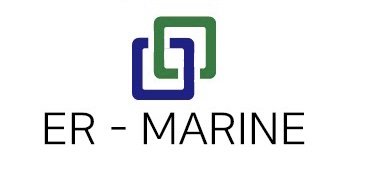
OUR O&M BLUEPRINT
We use our offshore asset maintenance experience and industry knowledge to provide solutions fit for the Korean offshore wind industry.
O&M assessment
Scope identification: Establish goals and parameters of the O&M phase, evaluation of existing O&M strategies.
Industry evaluation: Analyse Korean market dynamics relevant to the O&M phase. Stakeholders and regulatory frameworks.
Risk identification: Identify and evaluate risks relevant for O&M operations, such as vulnerabilities and barriers.
Viability assessment: Conduct an analysis to evaluate viability of Korean O&M strategies which include a technical feasibility, regulatory compliance, supply chain and financial viability.
Korea supply chain analysis: Evaluation of the offshore wind supply chain potential which includes the availability, capabilities and limitations, barriers, logistics and service providers.
O&M concept
Strategy development: A detailed strategy that includes the goals, objectives, key activities and timelines for the O&M phase. This requires setting of performance targets, maintenance methods, resources allocation and regulatory frameworks to ensure realistic O&M operations.
O&M evaluation: Analyse and evaluate the O&M requirements with a high focus on equipment maintenance, operational concepts and logistics. Analysing specific logistic requirements related to transportation, infrastructure and spare parts to optimise the O&M process.
O&M optimisation: Identification and optimisation of O&M activities. Improving organisational efficiency and processes to maximise efficiency.
Availability assessment: Conduct an analysis to evaluate reliability of Korean offshore wind assets and improve their performance. Performing reliability analysis to identify areas for improvement, increasing of asset availability and minimising downtime.
Technology analysis: Evaluation of technologies and solutions that can improve O&M operations. Conducting feasibility studies and developing new approaches to improve O&M efficiency.
Logistics evaluation: Analysis and selection of suitable ports for logistics operations related to O&M. Distance to the offshore wind farms, port infrastructure, bottlenecks and timelines of availability.
O&M planning
Financial analysis: A detailed evaluation of costs related to O&M operations and an identification of cost improvements. Budgets, operational expenses, developing cost saving measures including optimising of resources allocation.
Supply chain management: Managing the supply chain aspects of O&M operations. Ensuring timely and efficient delivery of spare parts and services. Optimising the means of offshore transport, spare parts inventory and implementing efficient supply chain strategies minimising vulnerabilities.
Service contracting: Defining the scope of services, negotiating service contracts, developing service level agreements and monitoring the performance of contracted services
Operational assessment: Evaluating performance data and operational parameters. Identifying areas for improvement and developing, implementing strategies to improve asset performance.
Spare parts management: Minimising downtime through effective spare parts management.
O&M execution
Planning and coordination: Development of detailed plans and the coordination of O&M activities. Scheduling, resources allocation, task coordination and ensuring effective communication.
Performance evaluation: Monitoring the performance of assets and O&M activities. Collecting and analysis of operational parameters, identification of issues and areas for improvement.
Break-down analysis: Perform detailed analysis to identify the root cause of failures, incidents or performance degradation.
Lessons- learned: Development of processes to capture lessons- learned for continuous improvement of O&M operations.
Quality control: Ensuring adherence to quality standards and specific regulatory requirements during the O&M execution phase. Quality control measures, inspections and compliance with HSE and Korean industry regulations.
Supply chain optimisation: Evaluation of supply chain processes and development, critical interfaces and vulnerabilities for the O&M operations. implementation of strategies to optimise the supply chain and reduce costs.
